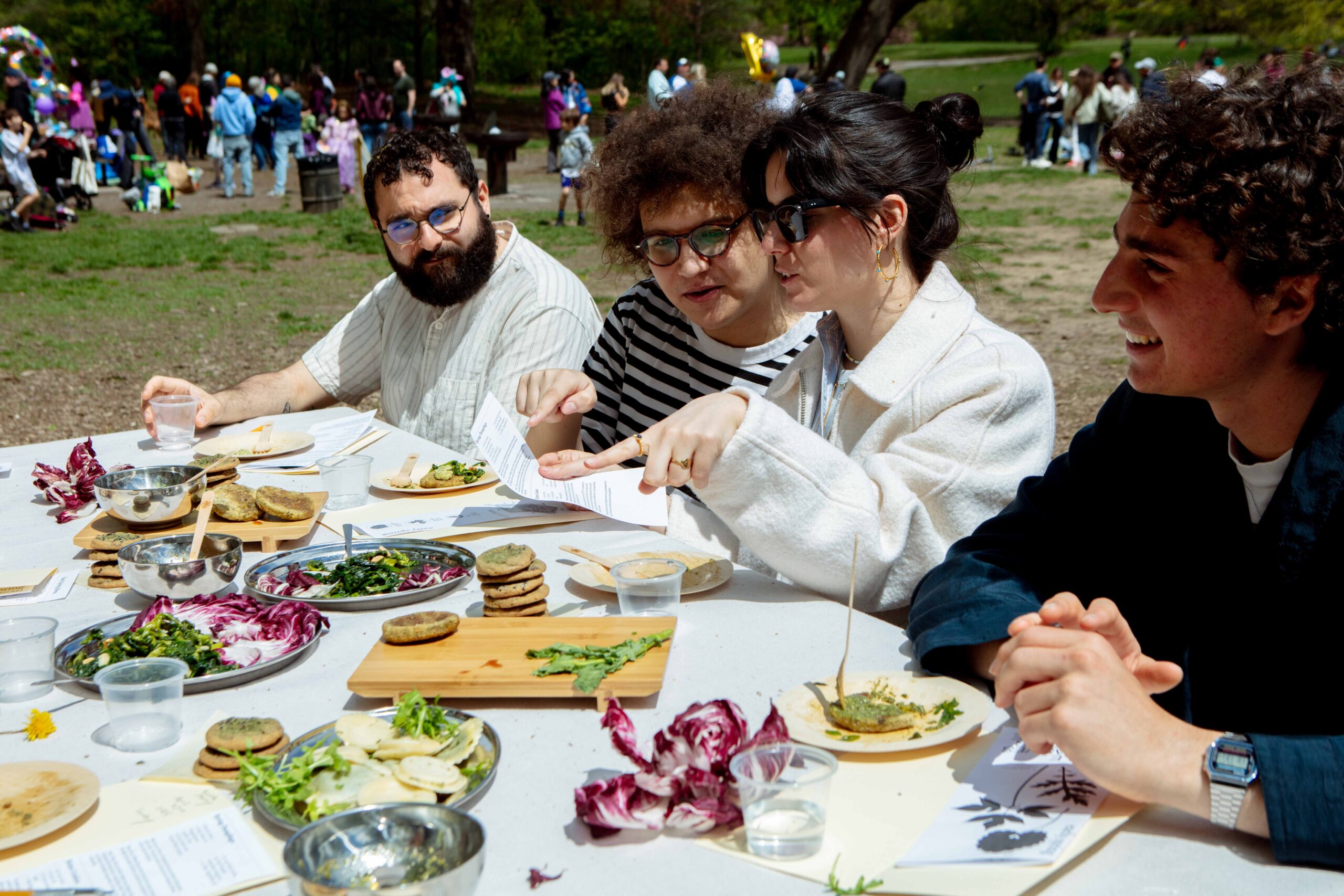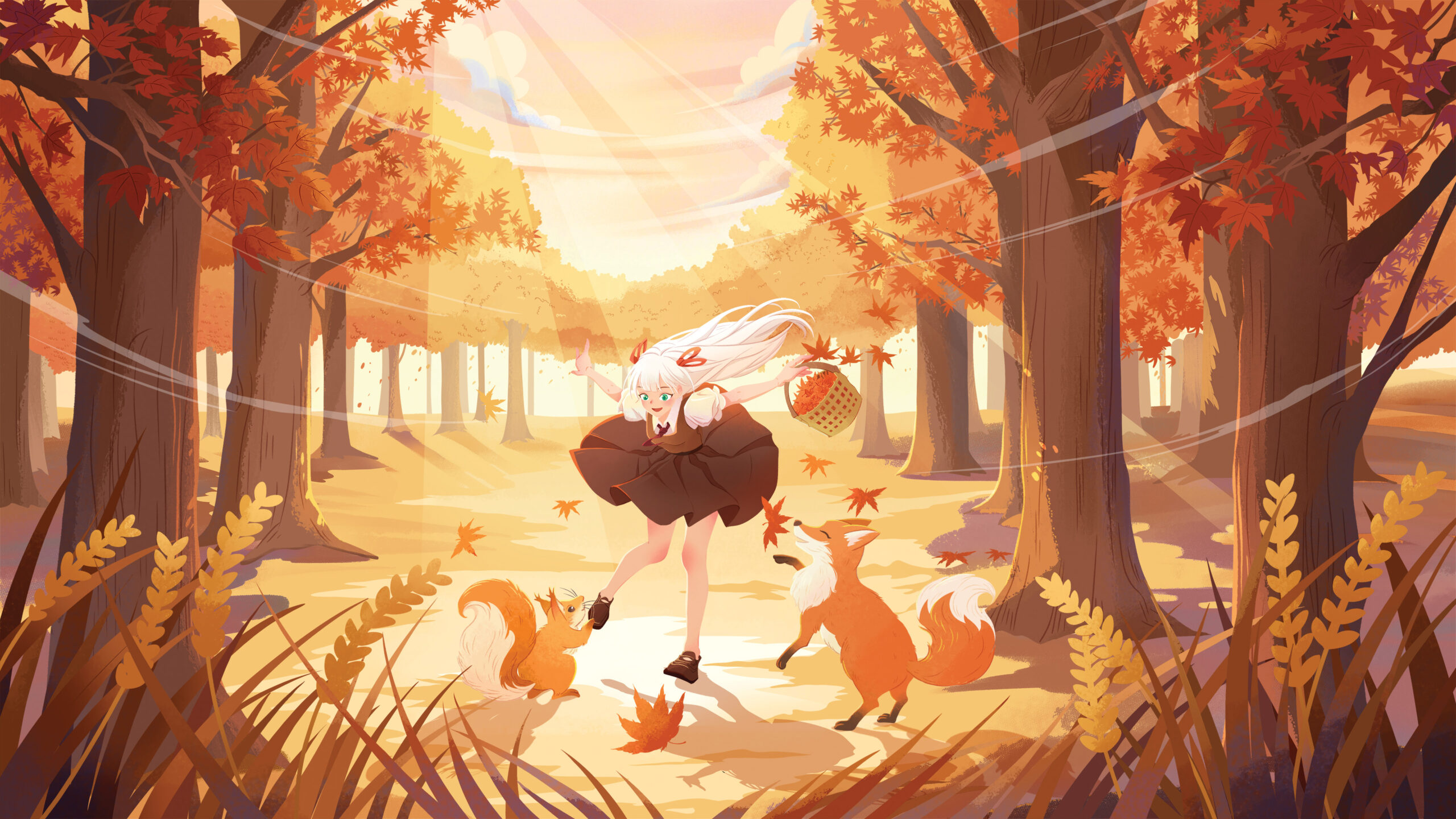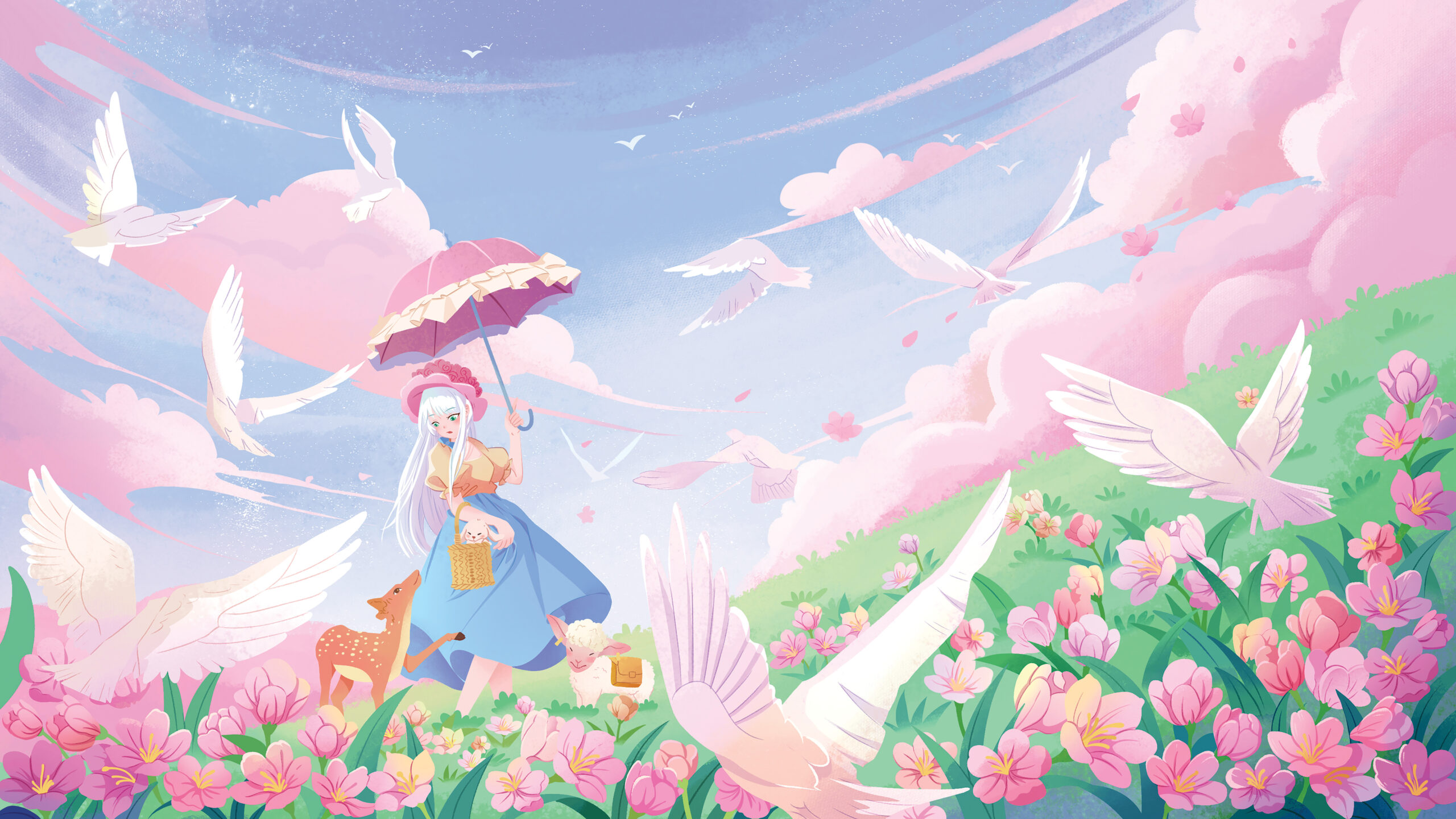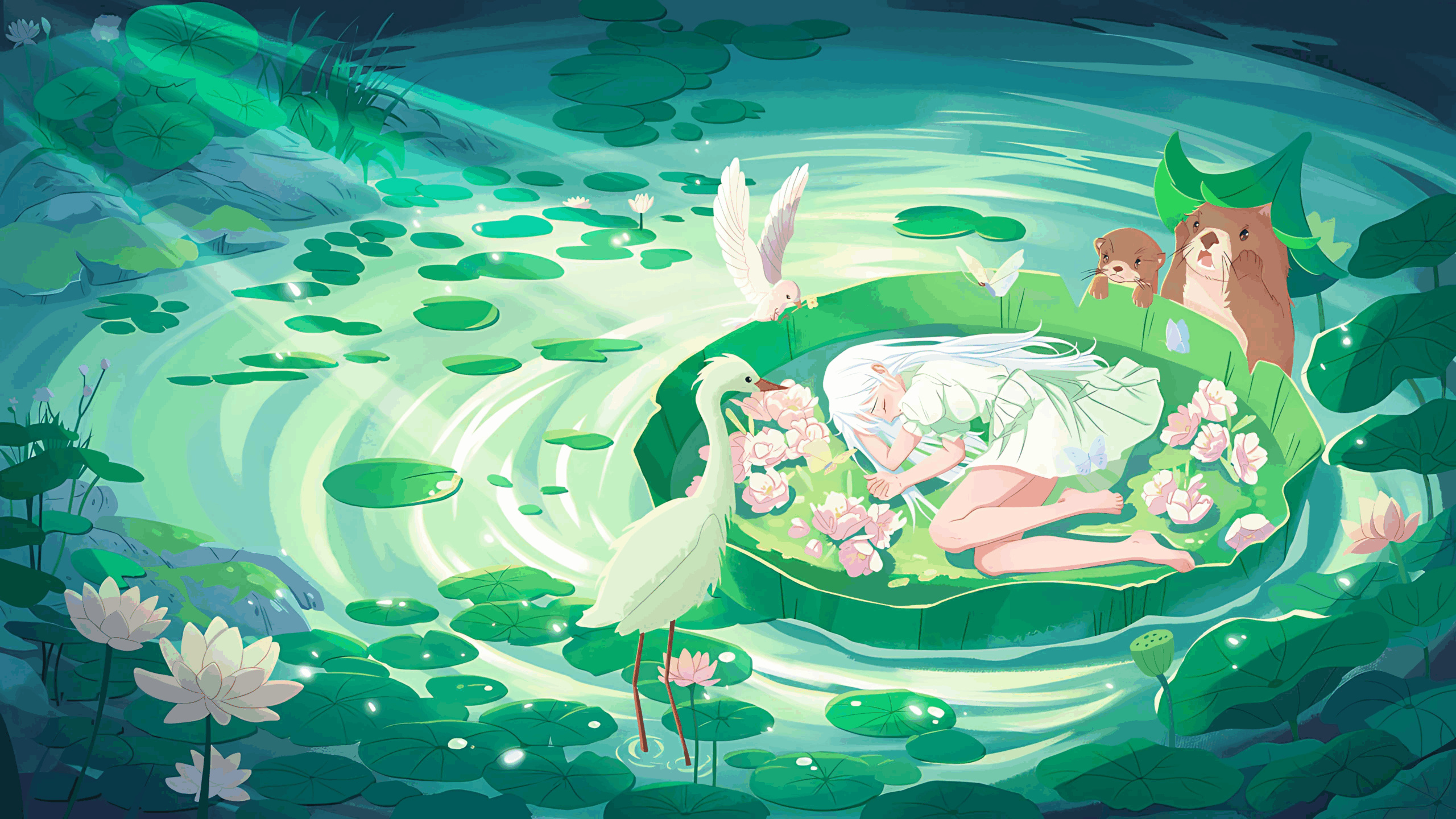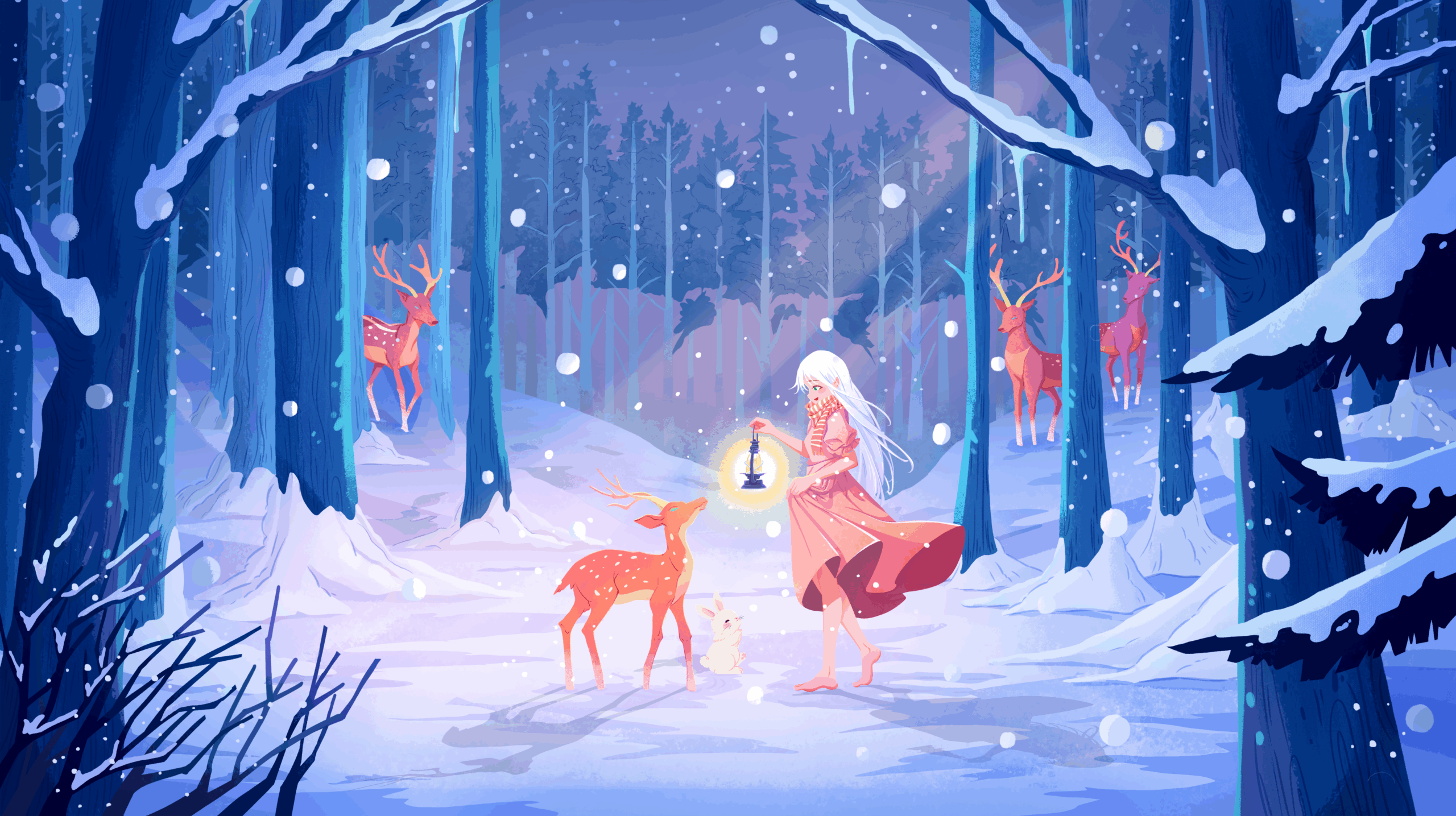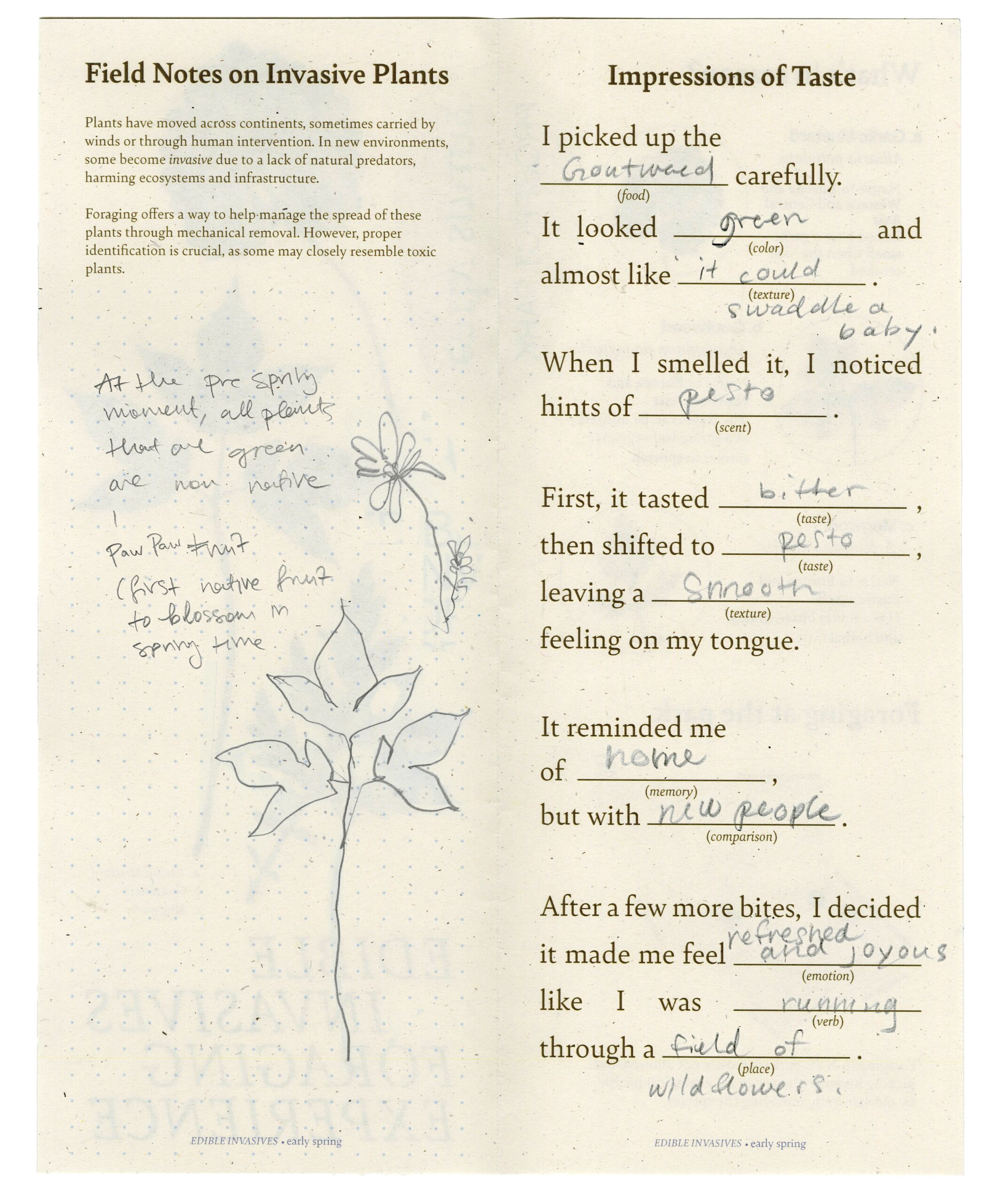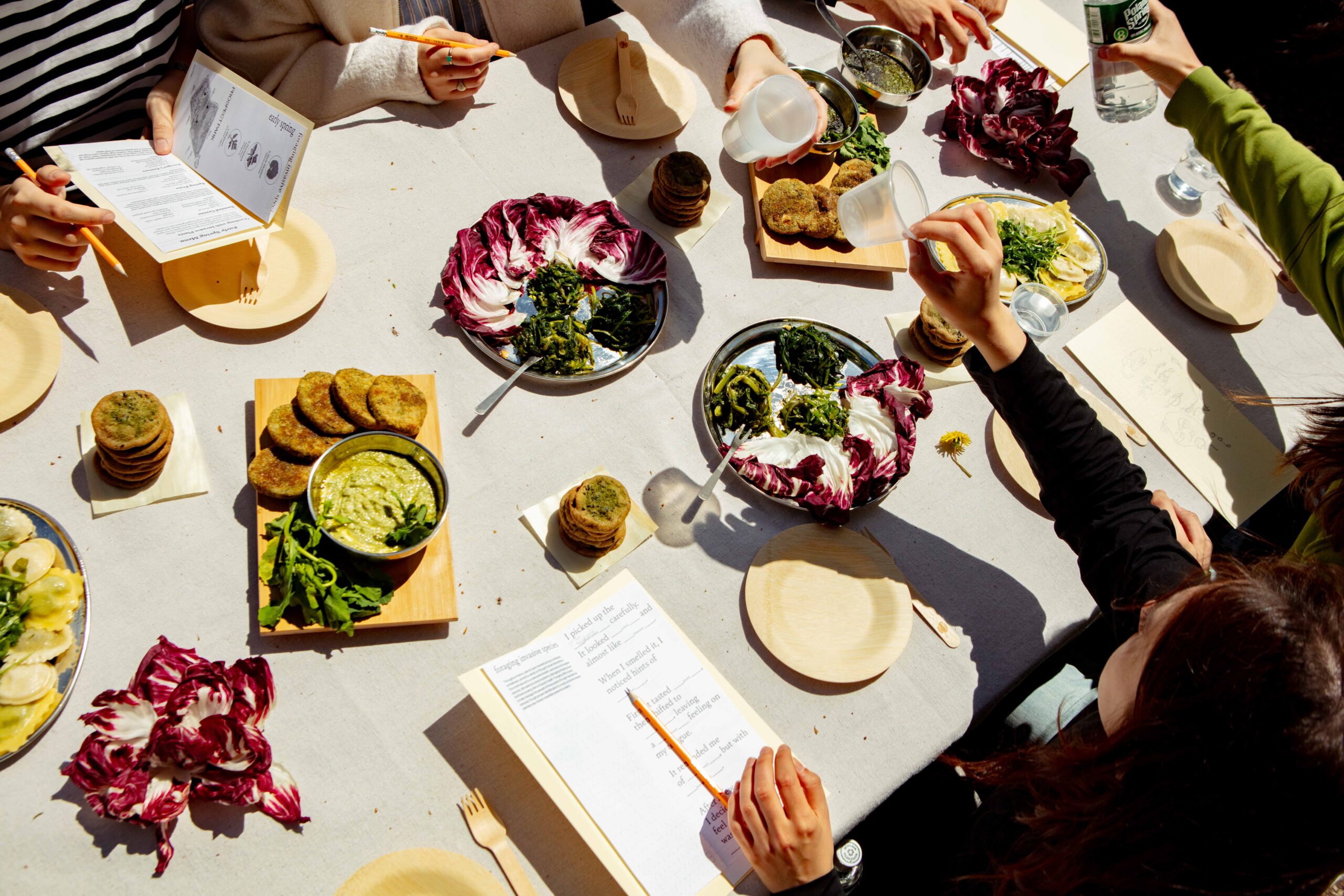It’s time we all got reacquainted with the earth. Or at least that is one takeaway from a number of recent projects from students in the School of Design, in disciplines ranging from interior design to illustration and beyond. Whether suggesting new ways to harmonize with plants and animals, looking critically at the way we treat our environment, or paying homage to the beauty of the great outdoors, these projects remind us that at the end of the day, humans are part of nature, not separate from it.
Learning to Explore on Governors Island
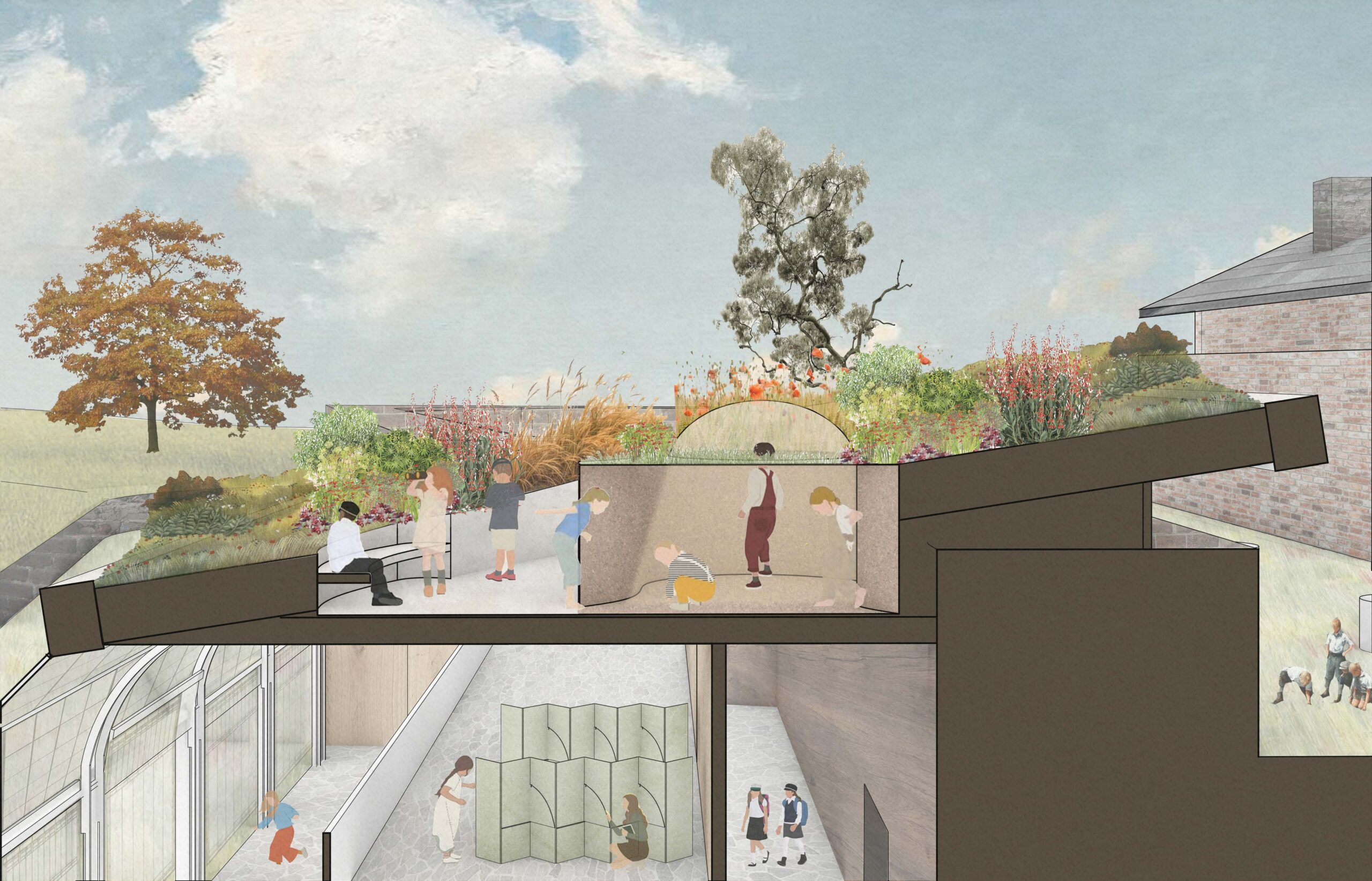
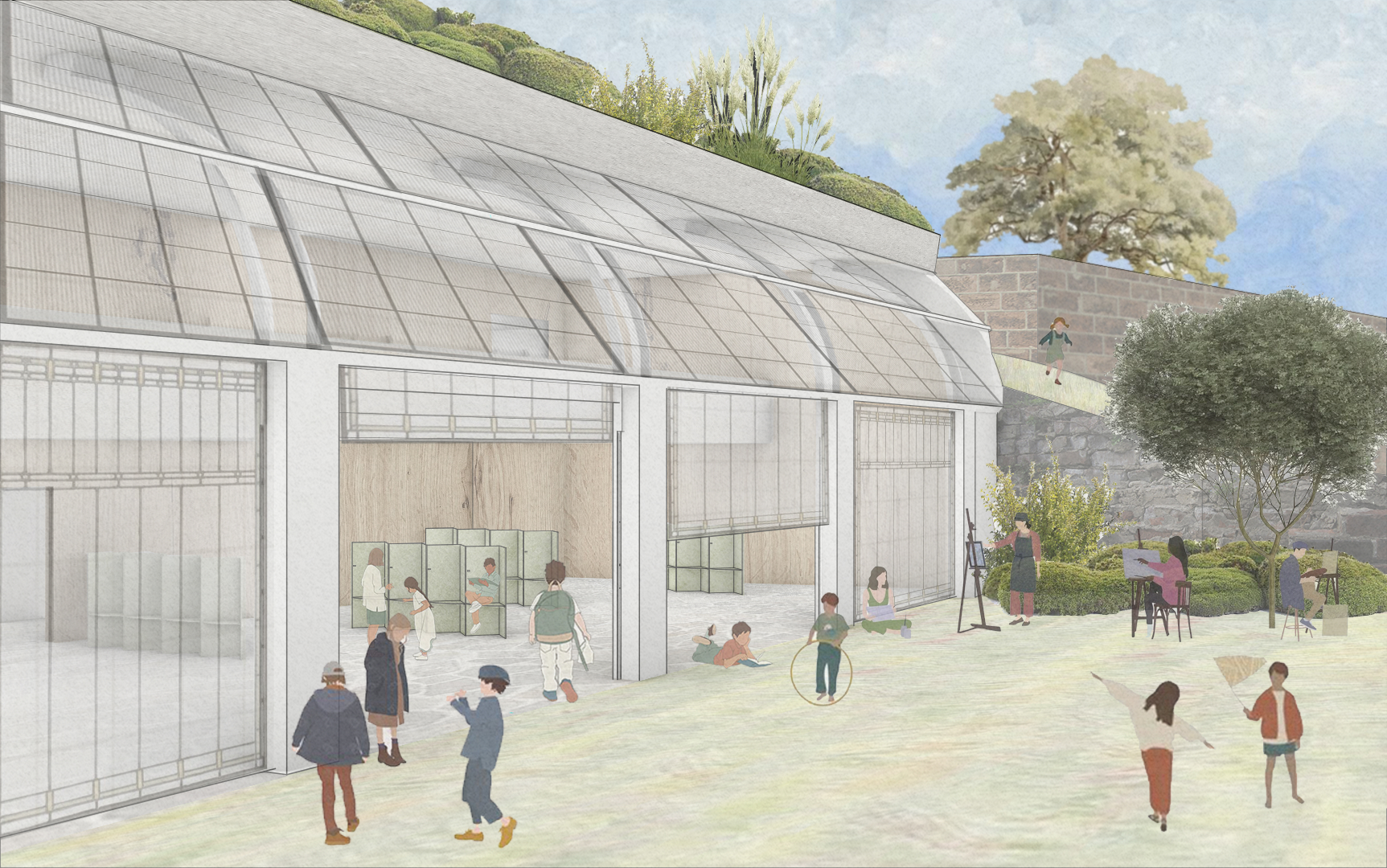
The “Governors Island Exploration School” was conceived by Katie Jones, BFA Interior Design ’25. Her project looks at mental health in children, and imagines a schooling experience that creates a greater connection with the outdoors. Jones’s thesis critiques the American public school system, which she sees as overly rigid and standardized. Instead, she envisions a model focused on building positive mental health through flexibility, play, and emotional learning. In Jones’s proposed school, classes would be “focused on engaging the students with the natural environment and building community connections, therefore reinforcing individual responsibility and empathy for other beings,” says Jones.
Your Plants’ Favorite App
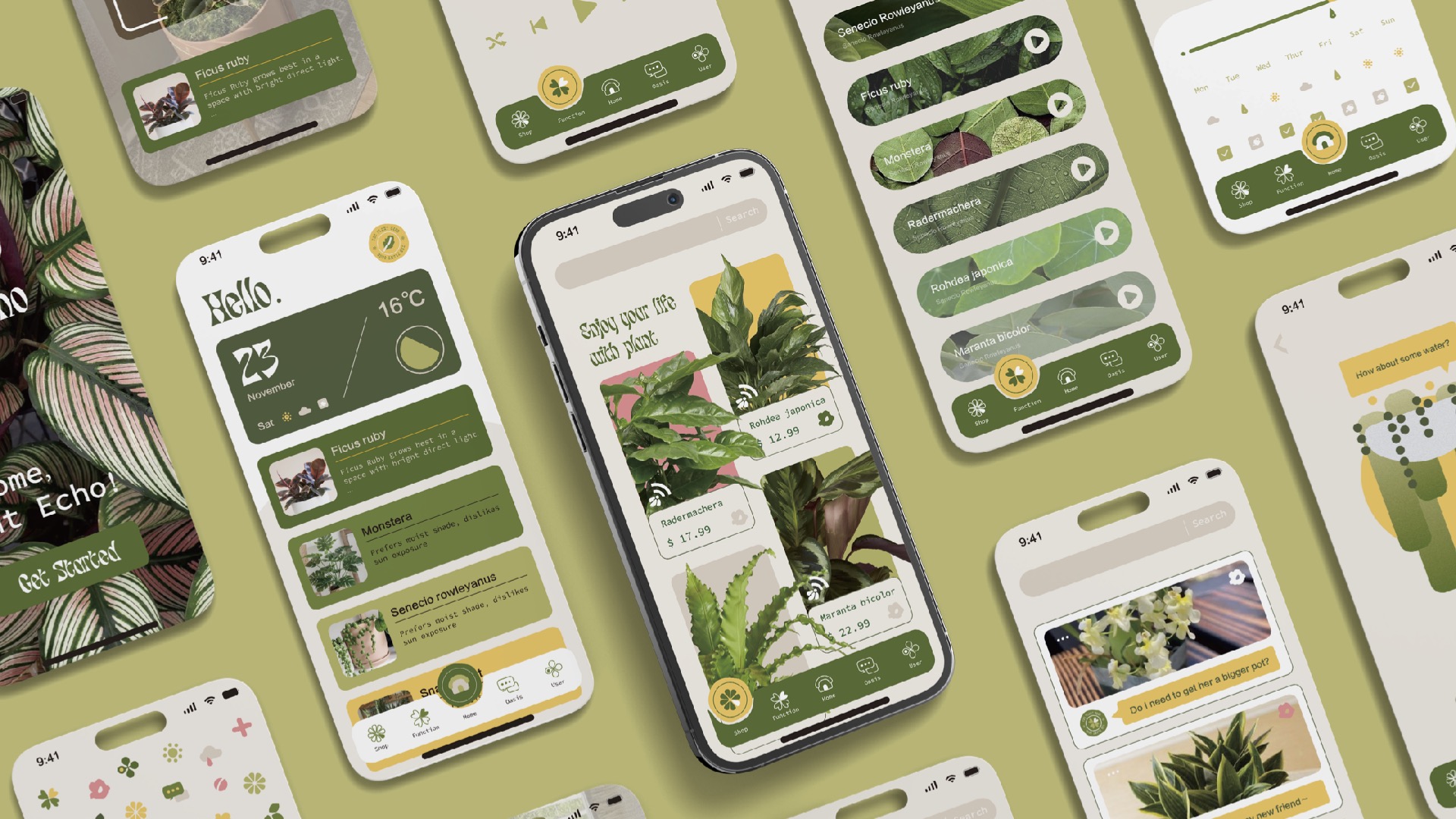
Connect with nature through an act of botanical care! Designed by Ran Tao, MS Packaging, Identities and Systems Design ’26, “Placho” is a plant care app that helps people become better plant parents. Users can track watering, monitor plants’ health, and connect emotionally with the process through ambient reminders. “Through Placho, I wanted to create a space where technology and nature intersect, fostering a sense of connection and mindfulness with the environment,” said Tao. Reinforcing the mission, Placho’s brand colors, typography, and iconography help bring a botanical sense of calm through your phone.
An Analysis of Pruning

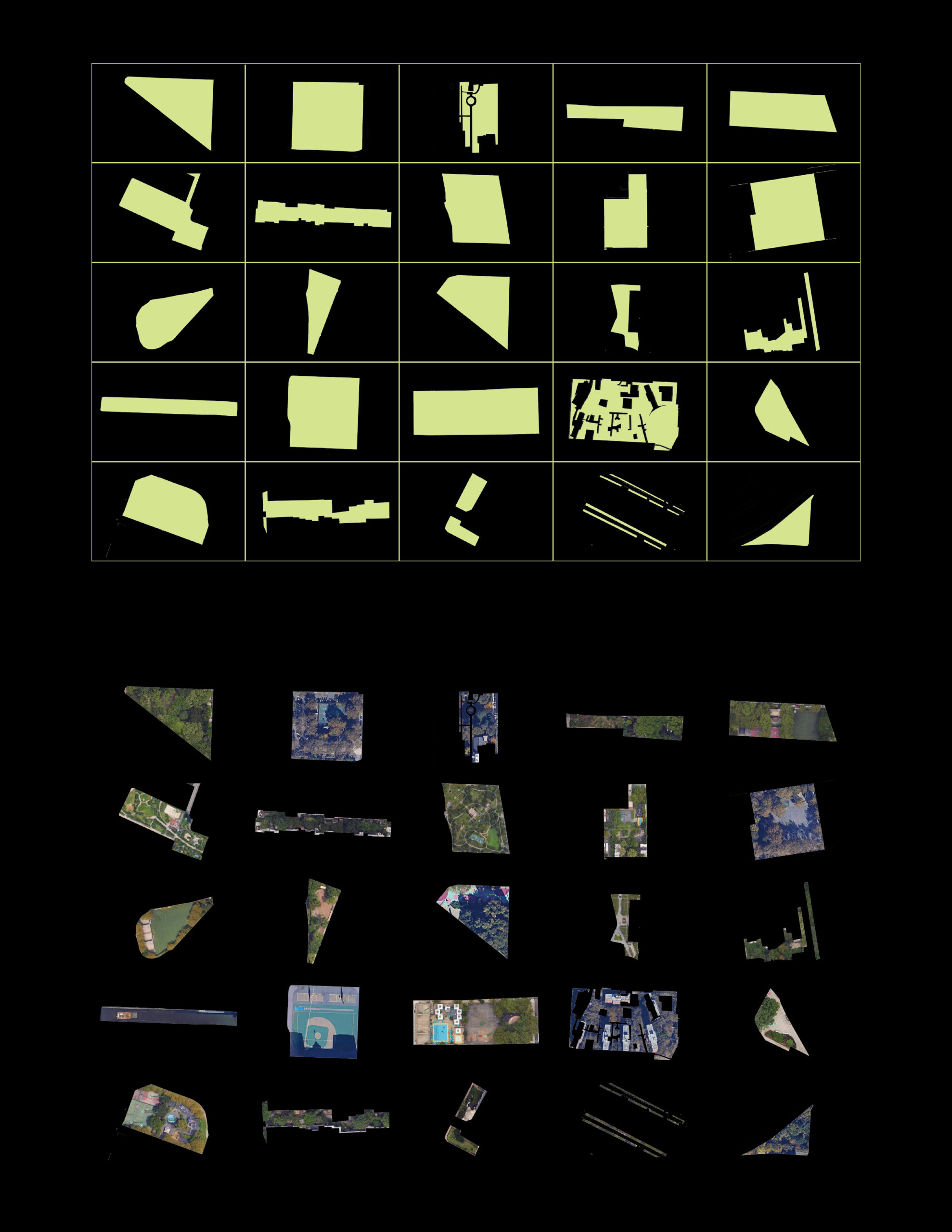
“Pruning Matter,” by Yanan Wang, MFA Communications Design ’25, explores the ways that people categorize and control nature. The project asks: What does it mean to prune? And how can we explore pruning as a metaphor for human relationships with nature? “Our interaction with nature extends beyond mere physical manipulation, embodying a profound cultural, psychological, and aesthetic dialogue,” writes Wang. “This shaping of nature blurs the distinctions between the natural and the man-made, challenging our notions of perfection and imperfection, as well as function and form.” Wang’s project attempts to map these dynamics through graphics, combined into a hand-made book.
An Illustrated Journey Through the Seasons
-
![Autumn forest scene with a white-haired girl joyfully playing among falling leaves, accompanied by a fox and a squirrel under golden light filtering through red and orange trees.]() Still from “In Season, In Sync” by Alyssa Ruan, BFA Communications Design ’25. Images courtesy of the artist
Still from “In Season, In Sync” by Alyssa Ruan, BFA Communications Design ’25. Images courtesy of the artist -
![Whimsical spring meadow with a girl holding a pink parasol surrounded by blooming flowers, white birds in flight, and gentle animals like a deer and a lamb.]() Still from “In Season, In Sync” by Alyssa Ruan, BFA Communications Design ’25. Images courtesy of the artist
Still from “In Season, In Sync” by Alyssa Ruan, BFA Communications Design ’25. Images courtesy of the artist -
![Serene summer pond scene with a girl resting on a giant lily pad surrounded by lotus flowers, birds, and otters, illuminated by dappled green sunlight.]() Still from “In Season, In Sync” by Alyssa Ruan, BFA Communications Design ’25. Images courtesy of the artist
Still from “In Season, In Sync” by Alyssa Ruan, BFA Communications Design ’25. Images courtesy of the artist -
![Magical winter forest with snow-covered trees, a girl holding a glowing lantern standing beside a deer and rabbit, while more deer appear in the snowy background.]() Still from “In Season, In Sync” by Alyssa Ruan, BFA Communications Design ’25. Images courtesy of the artist
Still from “In Season, In Sync” by Alyssa Ruan, BFA Communications Design ’25. Images courtesy of the artist
“In Season, In Sync” by Alyssa Ruan, BFA Communications Design ’25, is a set of peaceful animated illustrations that follow a girl’s journey through each of the seasons, as she quietly converses with plants and animals. “Rather than telling a grand story, these works aim to awaken a quiet longing within the viewer, a desire to return to a simple, free life, softly embraced by nature,” said Ruan. “In a world that moves so fast and feels so loud, I hope this series can offer a small moment of calm, and help people reconnect with the softer, quieter parts of their own hearts.”
Footwear that Reconnects You to the Earth


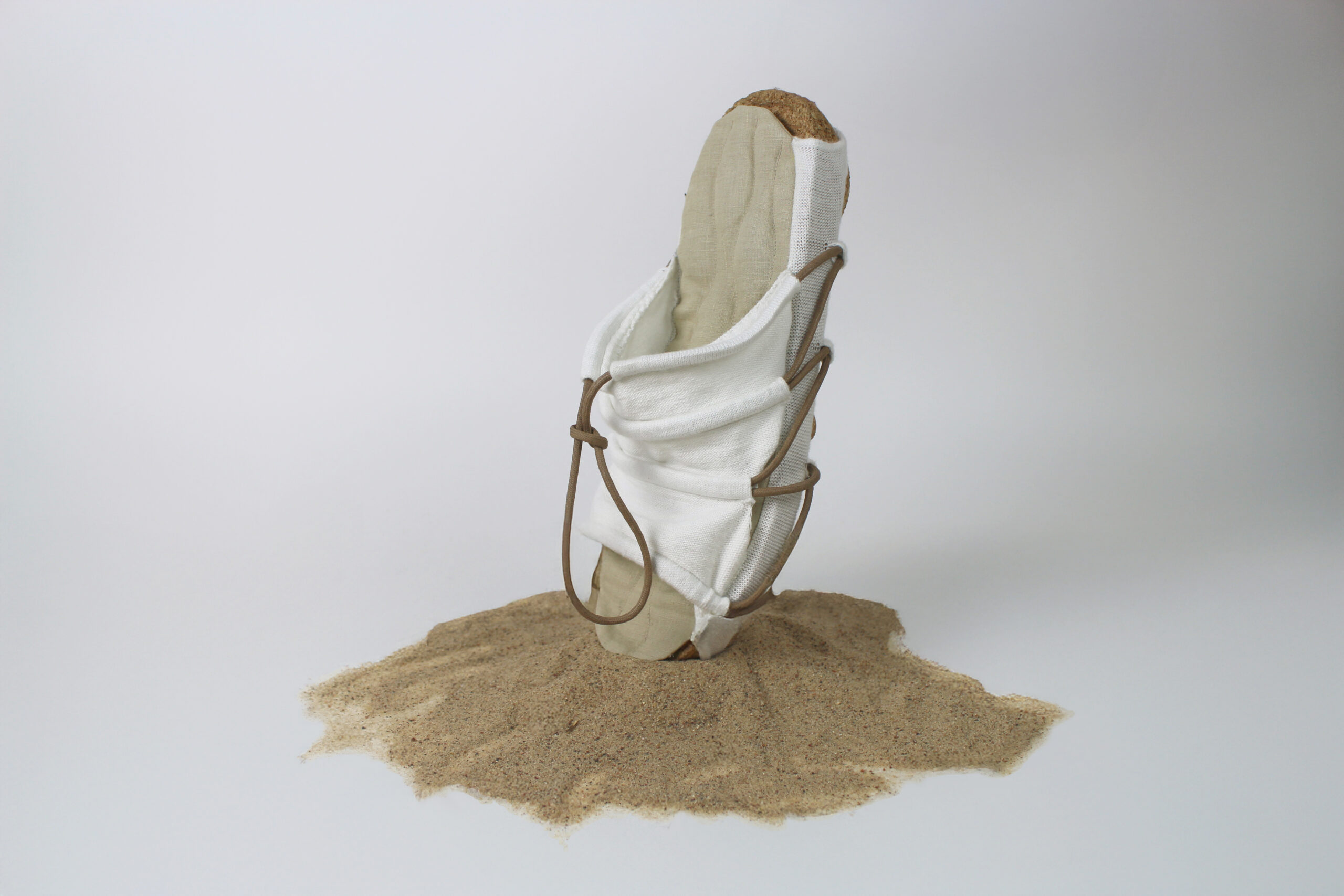
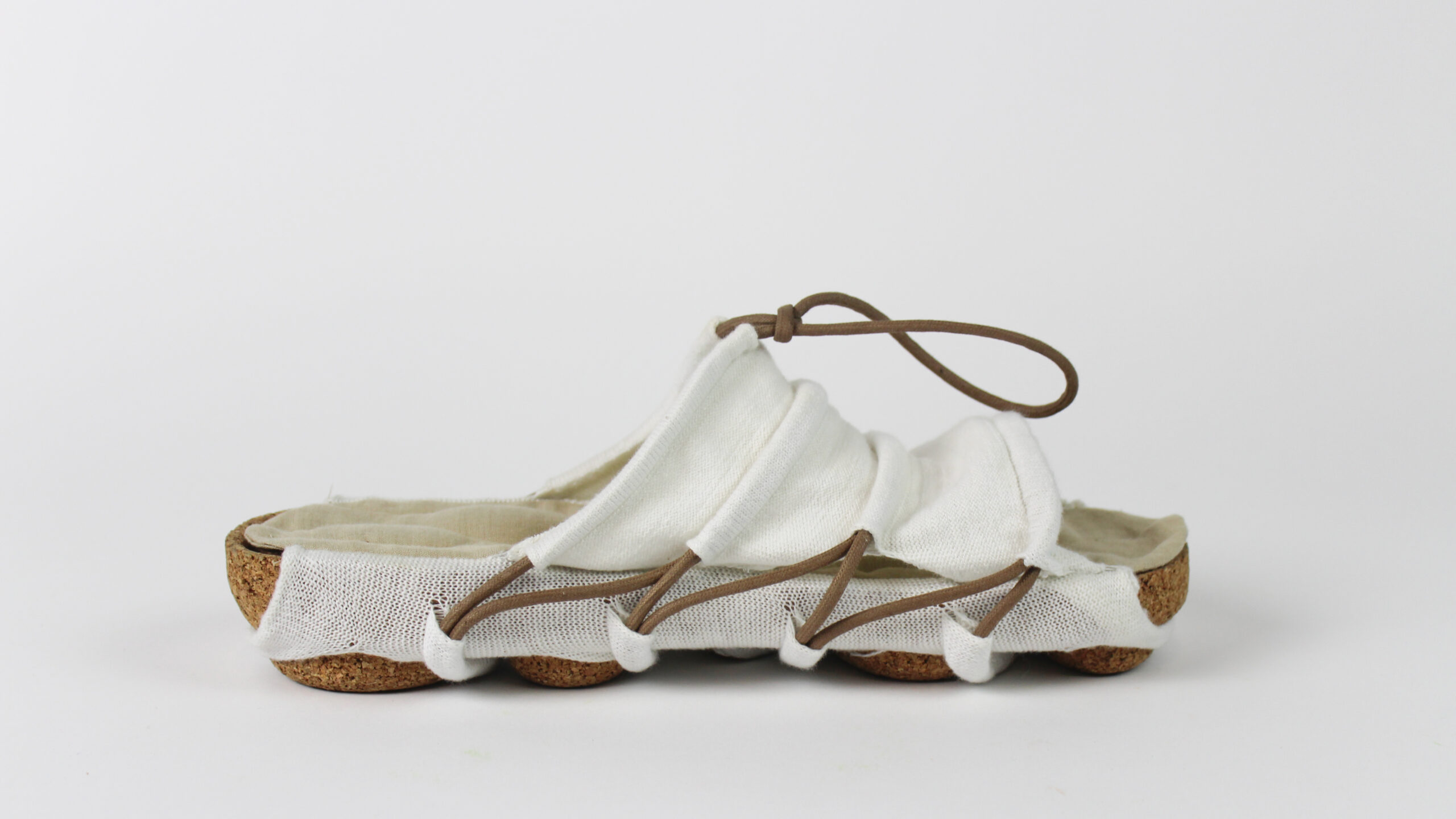
“In today’s busy urban environment, people are surrounded by concrete buildings and spending most of the time in office spaces, leading to a growing disconnection from nature,” said Chanbin Im, BID ’25. Noticing this, she decided to design indoor shoes that are meant to mimic the feeling of walking barefoot on natural surfaces, such as sand. Wearers of “Bare with Nature” are encouraged to be mindful in their movements and respectful of their natural environment. By creating a natural sensory experience, Im hopes to help people relieve stress and feel more connected to nature.
“When a Tree Falls, Does Anyone Mourn?”
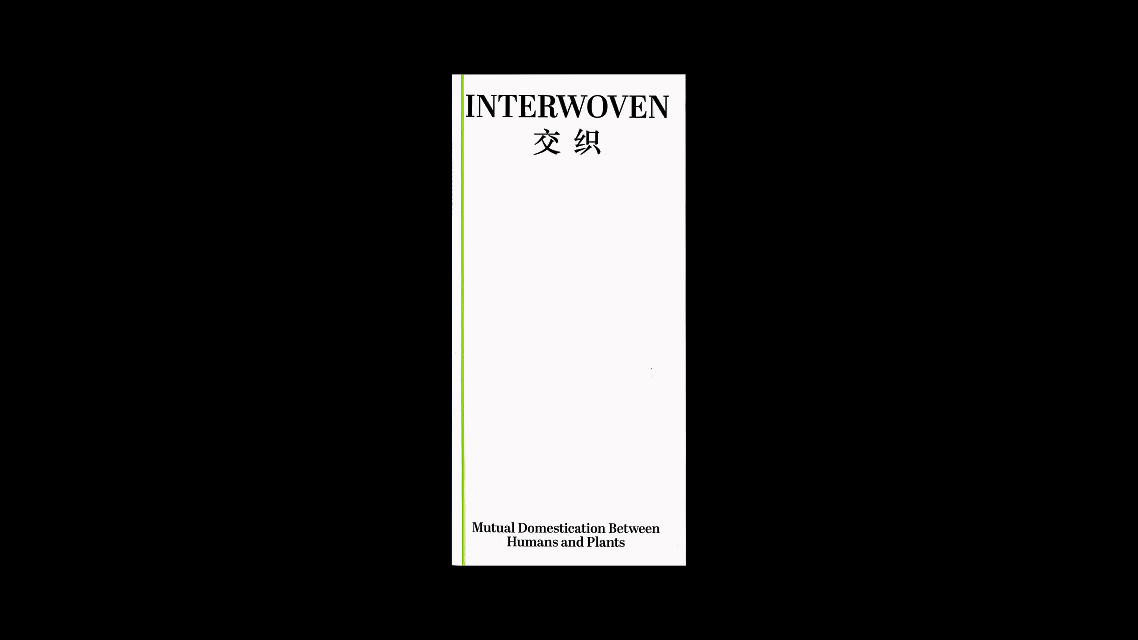
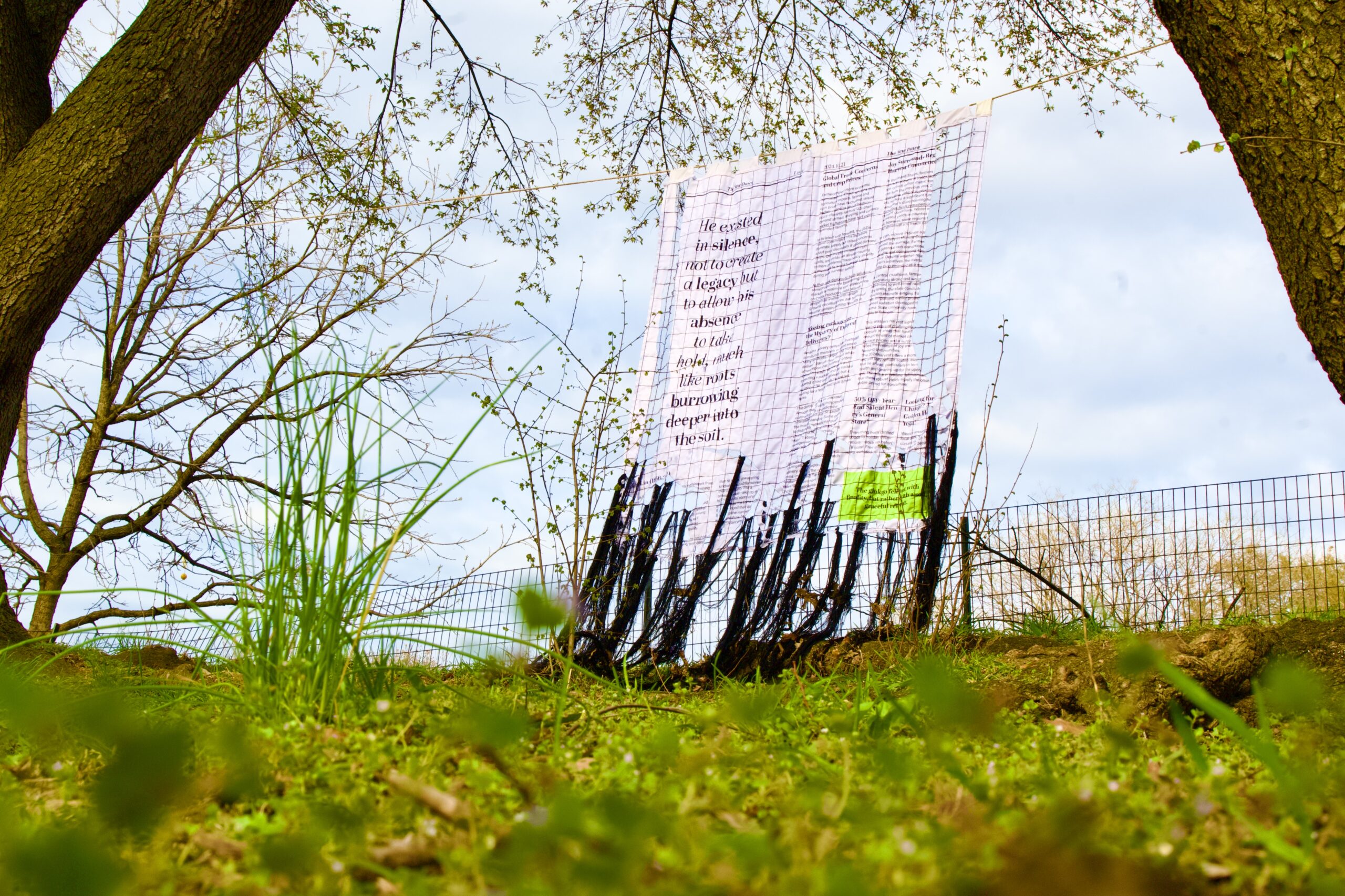
“Interwoven” by Jinrong Jia, MFA Communications Design ’25, looks at how humans and plants domesticate and shape one another. The project takes the form of fictional obituaries for a man and for a dying ginkgo tree. “The act of mourning a tree—traditionally seen as nonhuman—is evidence of mutual domestication: we treat the tree as kin, not as an object,” writes Jia. “Through this parallel narrative, expressed in a stitched textile and printed publication, the project reflects on how presence, memory, and influence persist across species and beyond death.”
A Case for Nature Therapy
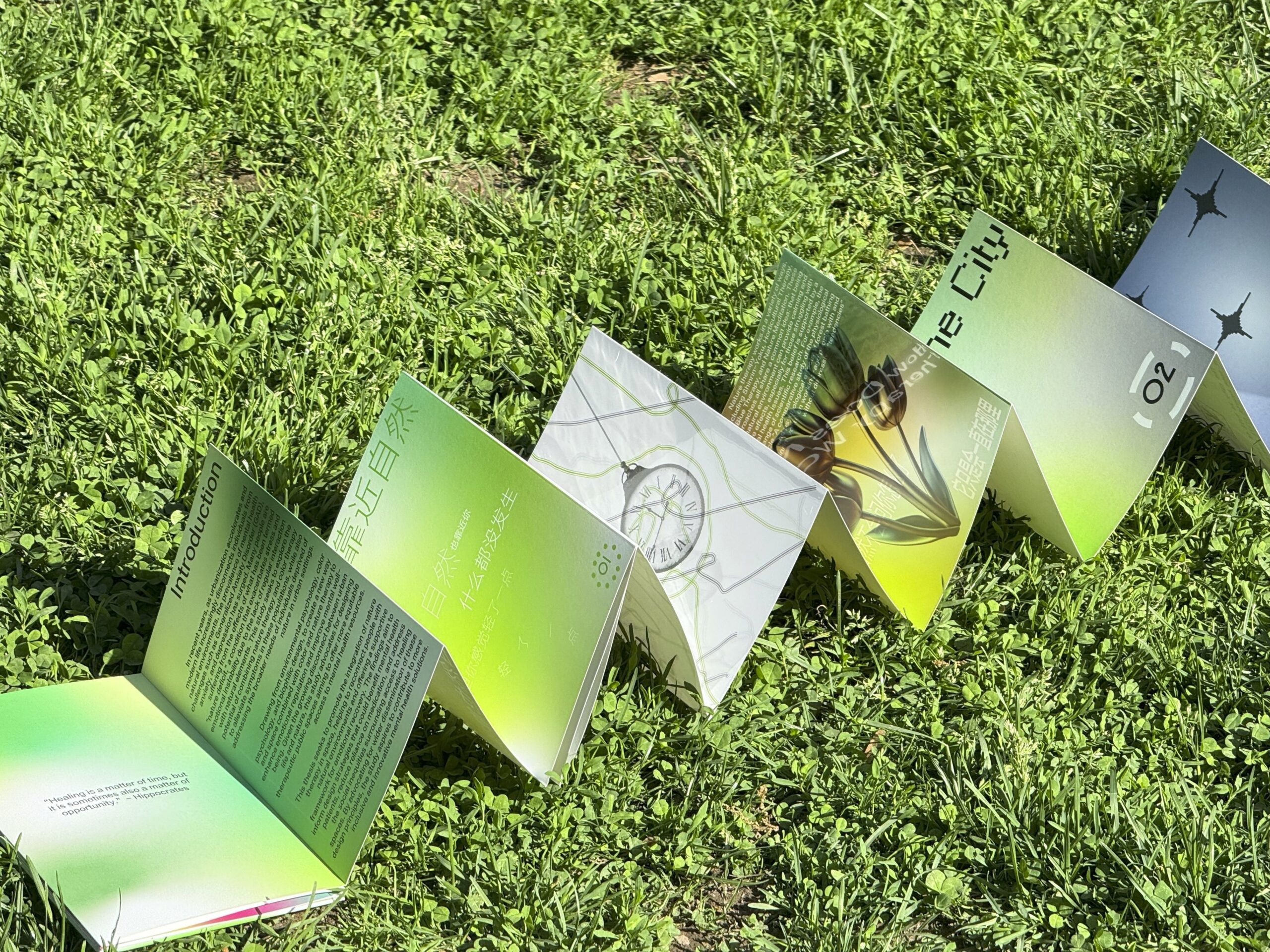
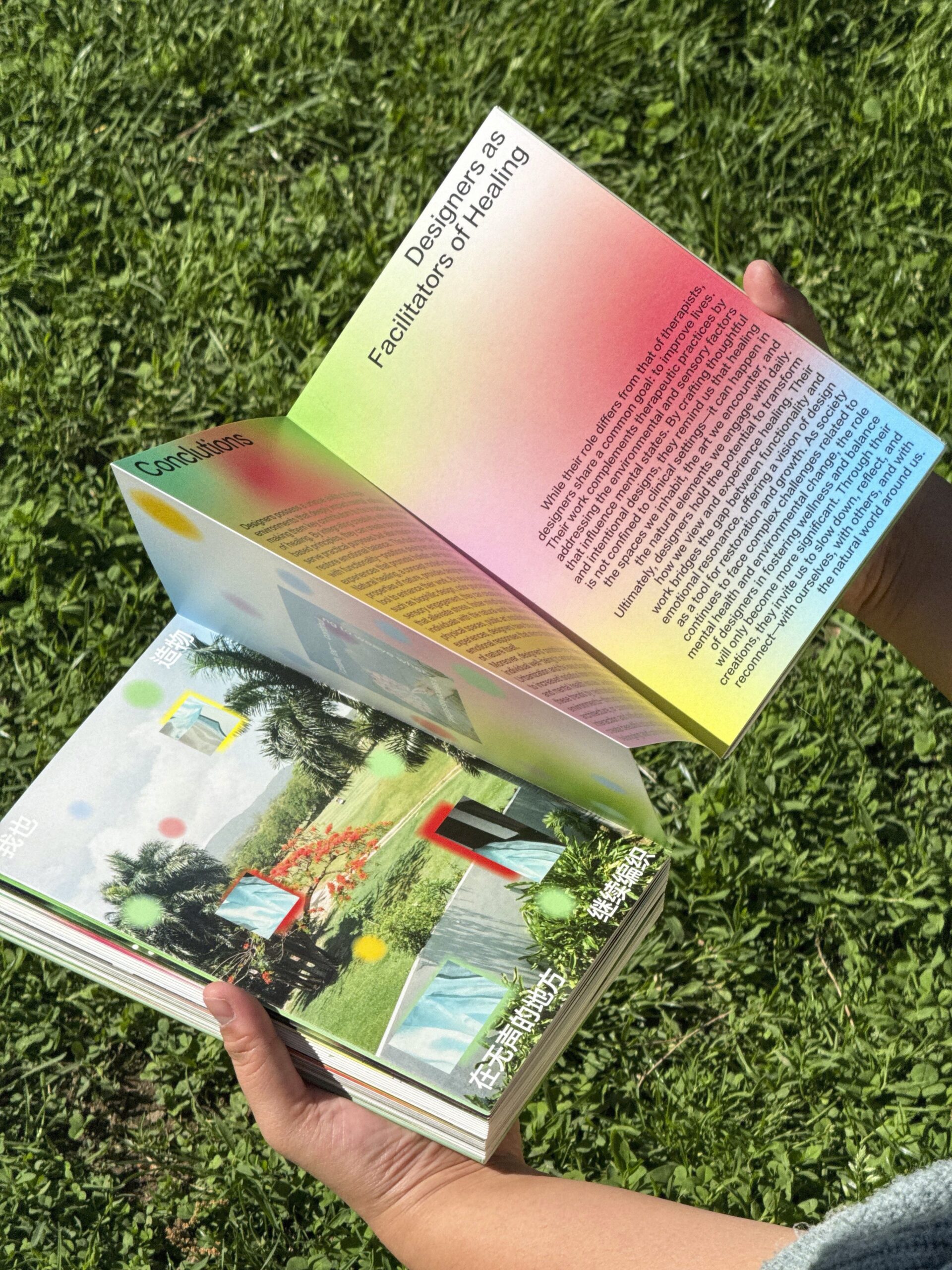
“Designers as Facilitators of Nature Therapy,” by Yuting (Winnie) Wu, MFA Communications Design ’25, looks at the possibilities of integrating design, nature, and mental health. Can nature therapy be incorporated into spatial design to support emotional healing? The study, compiled into a thoughtfully designed book, proposes strategies to enhance mental well-being, reduce dependence on medication, and promote more equitable access to therapeutic spaces by reconnecting people with natural environments.
Design Rocks!
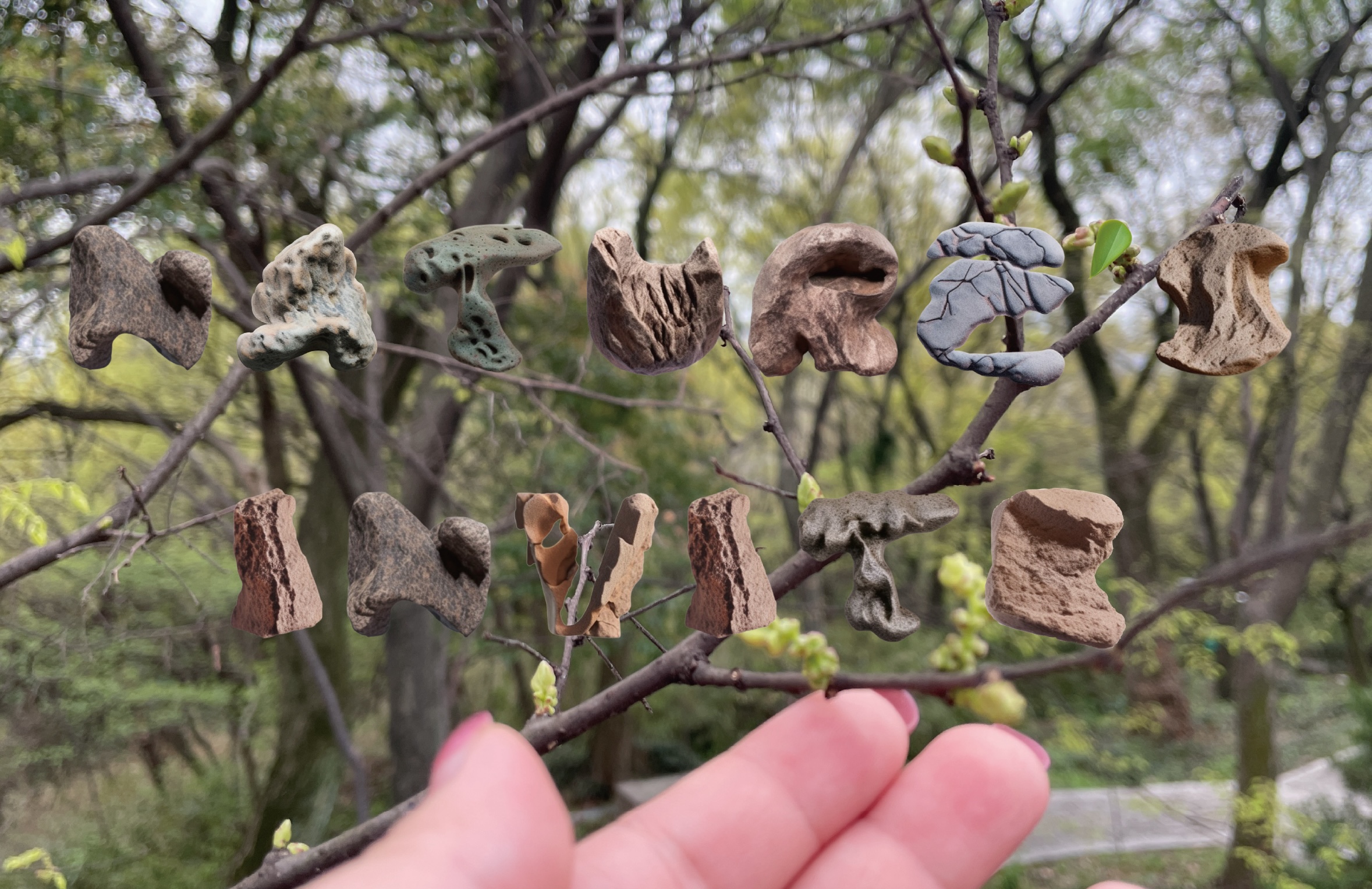
“Sowing Poetics: Natural Texture as Co-Designer” by Yutian Qian, MFA Communications Design and Package Design ’25, takes reconnecting to the natural world as its primary aim. By designing unique text fonts that draw inspiration from rocks and mosses, Qian wants to “create sensory experiences that invite urbanites to reconnect with the natural world and thereby foster a ‘kinship ecology’ between urbanites and novel urban ecosystems.”
Eating Invasive Species
-
![A handwritten field notes worksheet titled 'Impressions of Taste,' with personal observations about an edible plant's look, smell, and taste, alongside a botanical sketch.]() Image from “Edible Invasives” courtesy of Arzu Oran, BID ’25
Image from “Edible Invasives” courtesy of Arzu Oran, BID ’25 -
![Top-down view of a group dining outdoors, sharing plates of wild greens and flatbreads while writing in printed booklets, participating in a foraging-themed tasting event.]() Image from “Edible Invasives” courtesy of Arzu Oran, BID ’25
Image from “Edible Invasives” courtesy of Arzu Oran, BID ’25
“Edible Invasives: Foraging & Tasting Experience” by Arzu Oran, BID ’25, takes an unexpected culinary approach to invasive plant management. Arzu proposes a series of seasonal events that invite attendees to explore and incorporate these disruptive and damaging plants into their cooking. Oran, who was a Student Merit Awards Finalist this past year, was inspired by personal experience.
“When I was growing up in Turkey, we would collect Linden tree flowers to make tea out of them. And when I moved to Brooklyn, I noticed that there were many Linden trees planted around the city,” she said. “But my friends from here didn’t know that they could be harvested. This introduced me to the idea of native, non-native, invasive species, and sparked my curiosity about what other plants surrounding us were edible yet unnoticed.”
The Marks We Carry
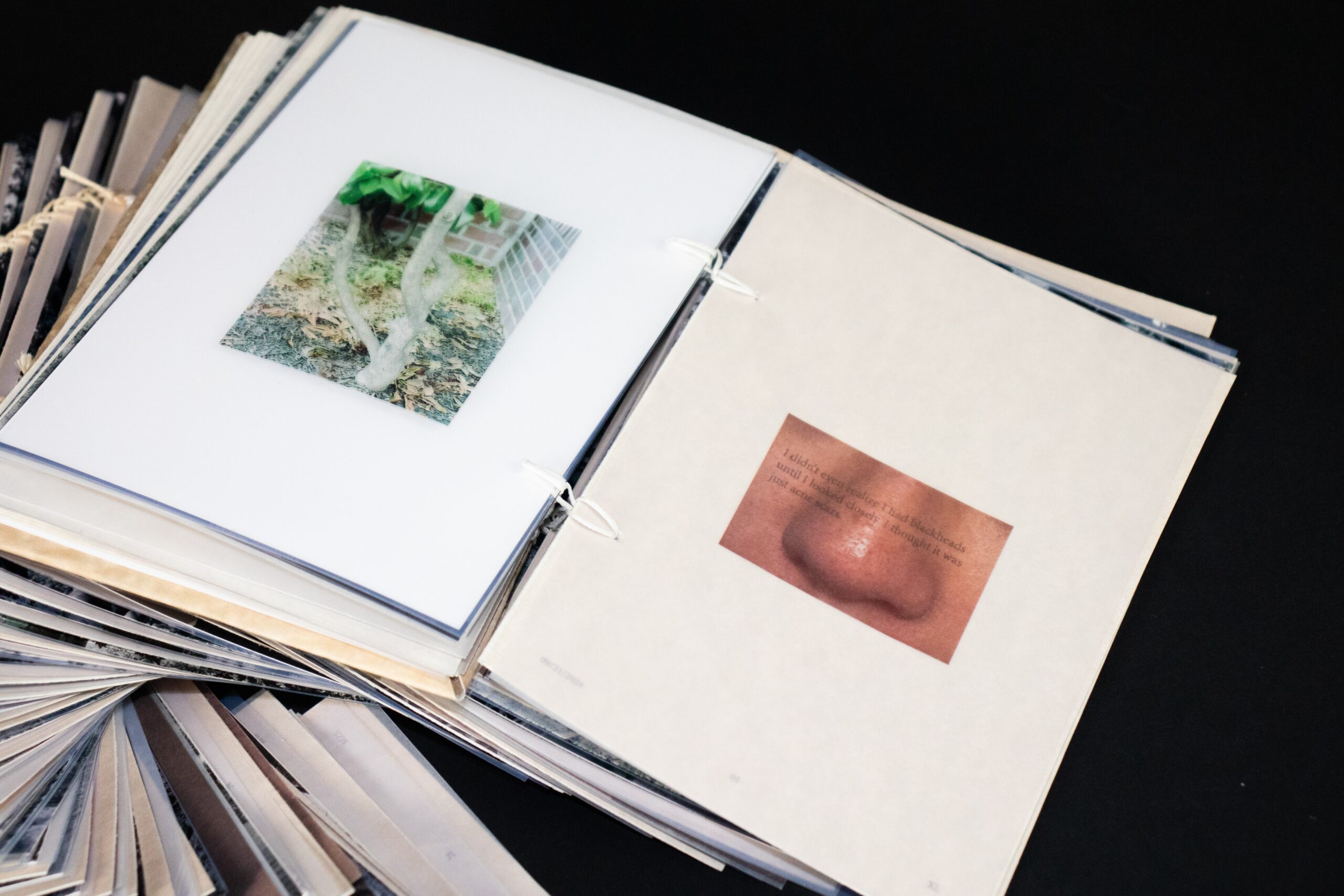
“Skin-Tree“ by Yue Wang, MFA Communications Design ’25, is a visual exploration of the marks we carry on our bodies, such as wrinkles, scars, and blemishes. Wang looks at how these marks are seen and judged compared to other natural textures, such as tree bark. Wang visually melds imagery of human skin with the surfaces of trees, inviting a shift in perspective: to see what we often call imperfections as part of a shared, natural language.
Nature’s Chair

“Shadows, A Sitting Experience,” by Andee Ashelman, BID ’25, is a floor seat made from reclaimed sawdust, and designed to evoke the “fleeting sensations of climbing and resting in trees.” Designed as a respite from the dense urban landscape, it offers a sustainable seating solution with minimal footprint or material waste. “Shadows,” said Ashelman, “tak[es] humans out of the central position and into the interconnectedness with other species, and the ecosystem.
An Animated Apricot with a Moral
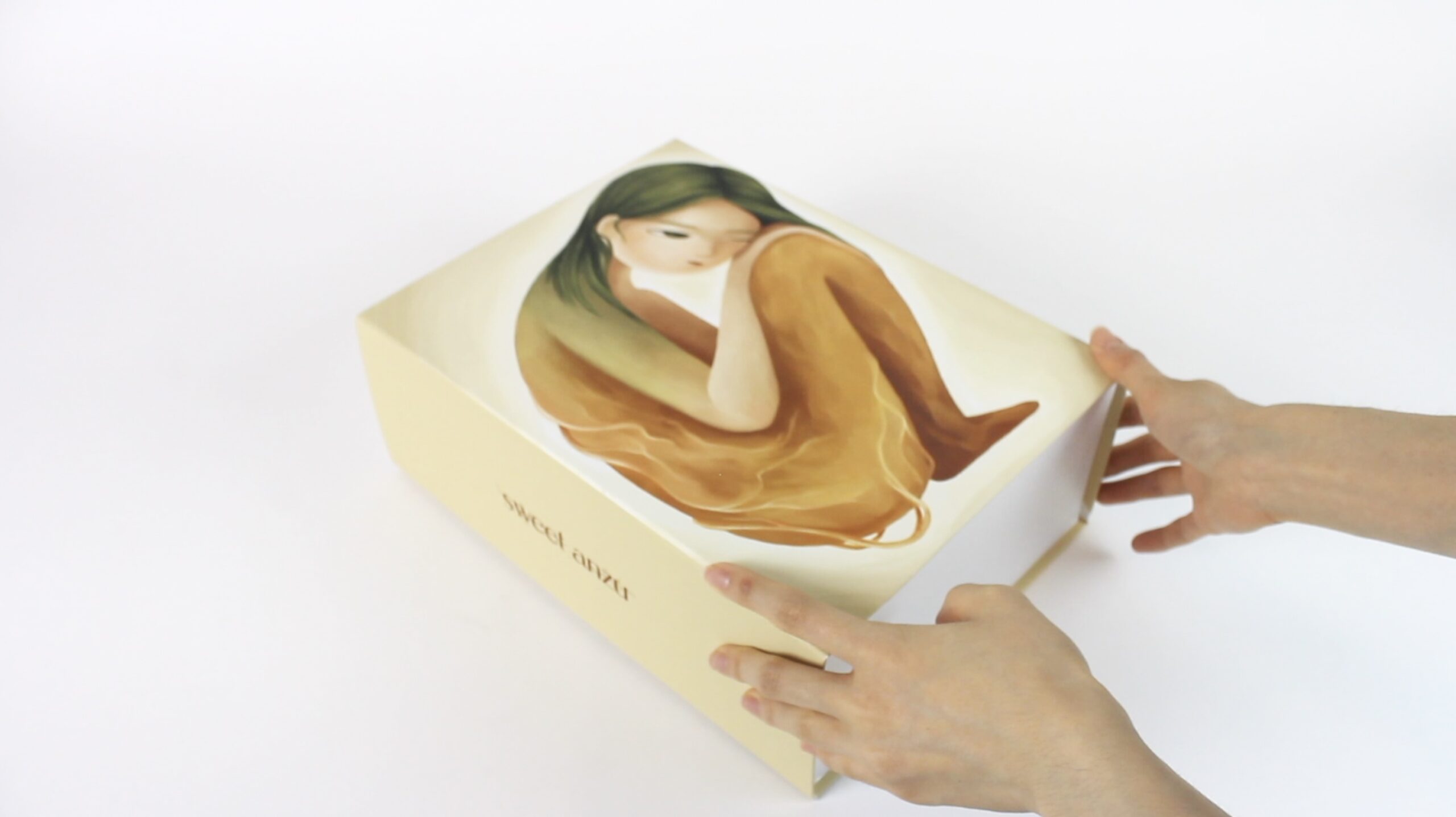
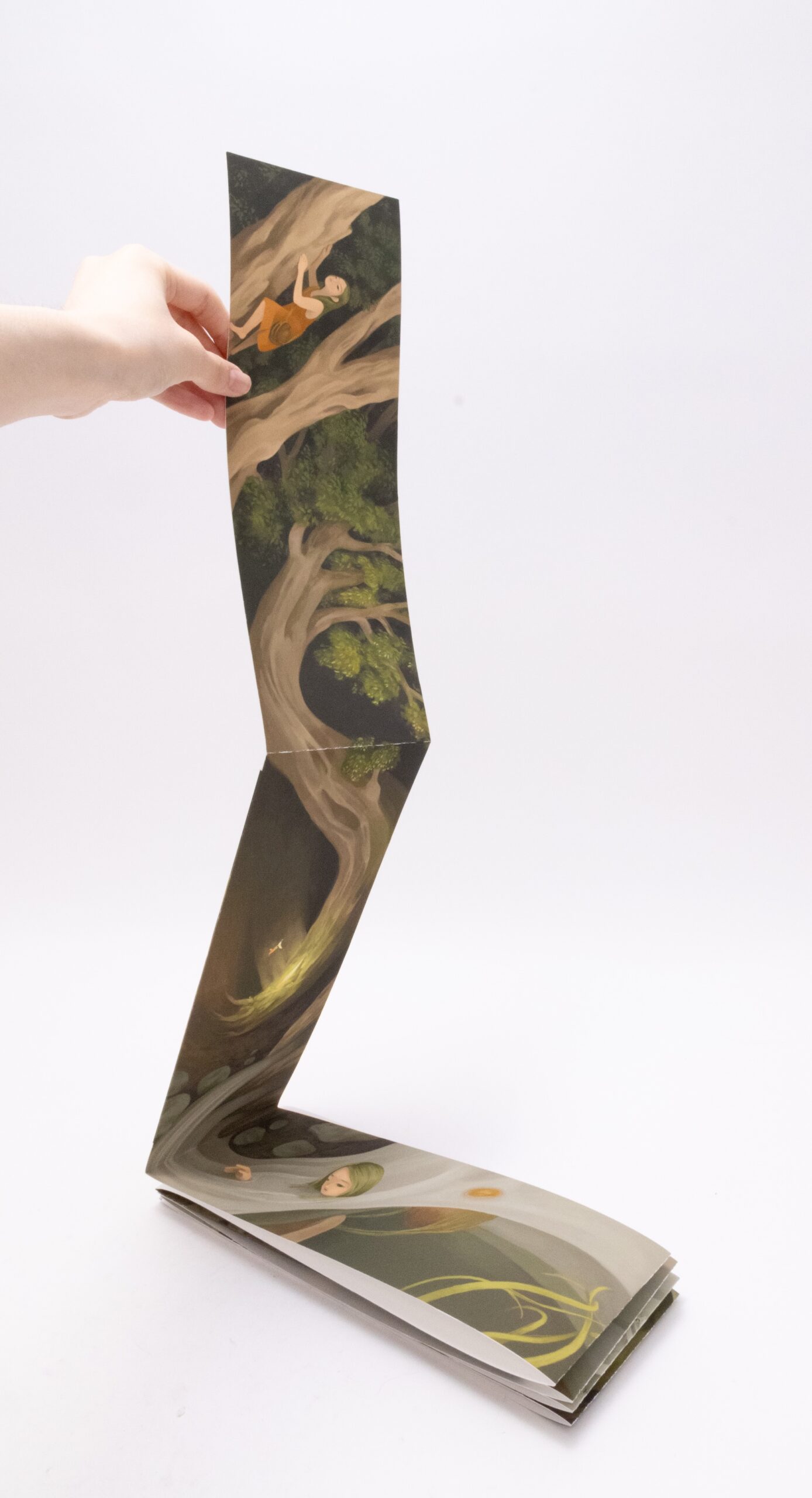
“Sweet Anzu” by Yua Maekawa, BFA Communications Design ‘25, tells the story of Anzu, an animated “apricot entity.” Throughout its earthy illustrations, infographics, zines, comics, and packaging, the fable reveals its moral: it is society’s responsibility to nurture change and give back for the collective good. Inspired by environmental voices, the story shows that nature’s beauty ultimately lies in its interconnectedness and diversity.
